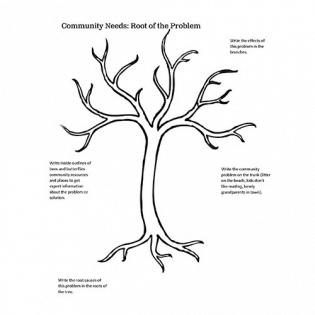Get to the Root
Keywords:
Nonprofit Organization
Problem Solving
Service Learning
Social/Cultural Issues
YGFGfocus
In this activity, participants use critical thinking to deconstruct an issue they care about. They identify a problem, explore the root causes and effects, and research who the experts and people most impacted are. This is a great way to build community, use creative expression, and come up with different approaches to collaboratively make a difference.
Get to the Root is a divergent thinking activity that broadens participants' thinking about the elements of a problem and how to collaborate with people who are most impacted locally. It's also a great opportunity to use respectful language and generous listening as they work together in small groups, honoring all contributions and expanding on one another's ideas.
Materials:
- Chart paper and markers for each group
- Internet access to look up resources
Activity:
- Work in small groups.
- First, the group decides what problem they want to talk about. A problem describes what is wrong in the community, rather than the desired outcome. Examples: "polluted neighborhood park" or "kids come to school without breakfast" or "limited Internet access."
- The participants draw a tree as big as their chart with bare roots and branches. They write their identified problem in the trunk of their tree.
- By the roots they write several root causes of the problem (no trash cans in the park, people don't respect the natural area, people stay inside).
- By the branches, they write several effects of the problem (kids can't focus on work, they are ill often).
- They write expert resources to learn from (organizations, websites, people who are most impacted by the problem and solutions) in the space by the bird. These organizations have a birds-eye view of the problem.
- The groups share their tree brainstorming with others and ask for further ideas and discussion.
Reflection and Next Steps:
Focus on what next best steps we can take right now. This may include the following:
- include the people who are most impacted by the issue in the explorations and problem-solving - "Don't do anything for us without us."
- meet with nonprofits to ask questions about the issue and what they do
- investigate the problem, learn why it happens, and explore ideas for addressing the problem
- tell others about the issue or ask what they can do
- be an advocate
- volunteer
- change habits
- collect resources to address the problem
- View Learning to Give toolkits related to Issues We Care About to learn more about an issue, the needs, ideas for service, and community resources.
Tutorial for this activity:
